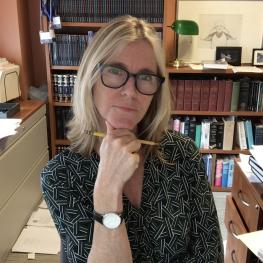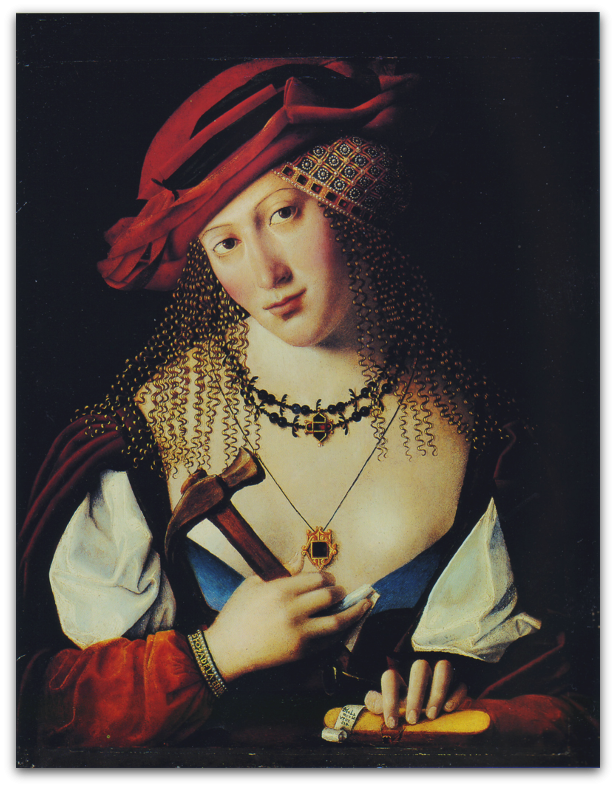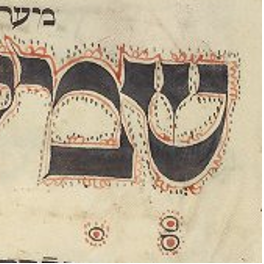Medieval Hebrew Manuscripts and Their Scribes
Announcing the publication of a new online open-access mini-course on Hebrew Paleography by Professor Judith Olszowy-Schlanger
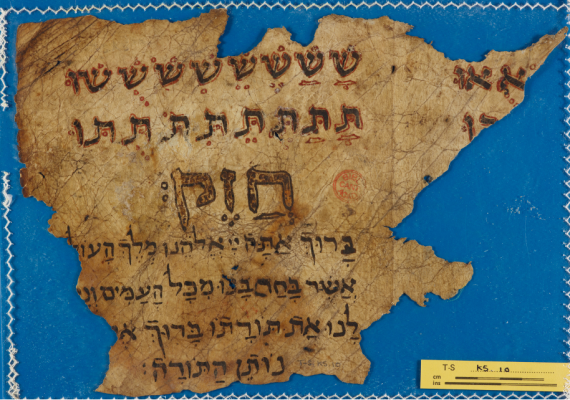
A page from a child’s primer teaching how to write the Hebrew letters (TS K 5.10r, Cambridge University Library), discussed in the second module of the mini-course).
What can the way scribes wrote tell us about what they wrote, and when and where? Quite a lot, it turns out. The Katz Center is delighted to announce the publication of a new online mini-course in which Professor Judith Olszowy-Schlanger delivers a fascinating introduction to medieval Hebrew paleography.
Olszowy-Schlanger is the director of the Centre for Hebrew and Jewish Studies, President of the Oxford Centre for Hebrew and Jewish Studies, and faculty member at the École Pratique des Hautes Etudes, Sciences Historiques et Philologiques in Paris.
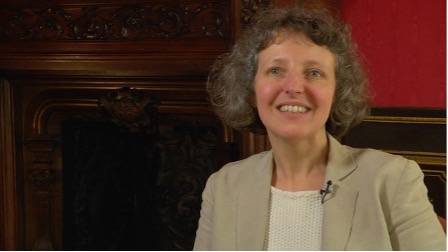
At Penn, she was the SIMS-Katz distinguished visiting fellow in Hebrew Manuscript study. In 2015, the Schoenberg Institute for Manuscript Studies (SIMS) and the Katz Center created an invitational fellowship, funded in part by the David B. Ruderman Visiting Scholar fund, that allows us to bring a scholar of pre- and early modern Jewish studies to the University of Pennsylvania each year to use our manuscript collections for research. The result is an enriched understanding of the significance of the manuscript(s) to Jewish studies and an opportunity for the scholar to engage with these unique artifacts of our intellectual heritage in a direct and meaningful way.
About the course
Paleography is the historical study of scripts found in manuscripts. This open-access, online mini-course introduces students to the writing styles found in medieval manuscripts and how they changed over time and place.
Acquaintance with the diversity of medieval writing showcases the ways that scribes developed local practices and drew on the techniques and methods of neighboring Muslims and Christians when writing the Jewish book. Professor Olszowy-Schlanger connects the variety of Hebrew scripts with larger concerns in medieval Jewish history, such as the spread of rabbinic literature and the power and leadership of the venerated Jewish academies in Baghdad. She brings the seemingly mundane history of manuscript writing to life by connecting the nitty-gritty mechanics of Hebrew writing with the larger political and technological history of medieval Europe and the Mediterranean.
The course is made up of nine short video lectures, replete with stunning images of medieval manuscripts, mostly drawn from the collections of the Penn Libraries.
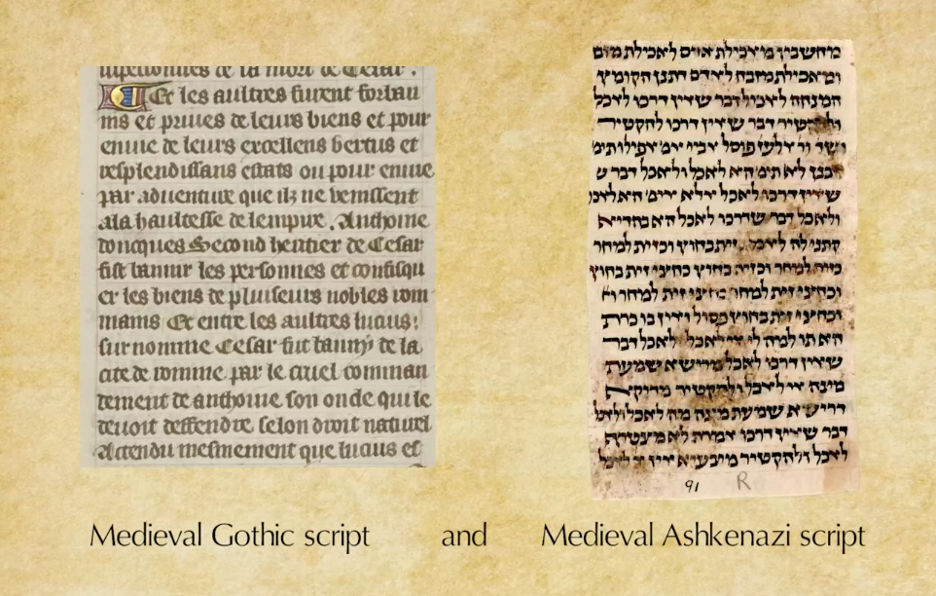
What you will learn
- How attention to manuscripts contributes to the study of the medieval past
- Basics of paleography
- What to look for when looking at handwriting
- How to determine the provenance of unsigned and undated manuscripts
- How to discover clues embedded in handwriting styles to learn the history of documents and their scribes
- Basic skills in identifying the medieval Jewish subcultures that produced particular manuscripts.
- Important elements that contributed to the physical production of knowledge in the premodern world
- How medieval Jewish cultures integrated writing styles developed by non-Jewish scribes, and so how handwriting tells us about cultural contexts and contacts in the Middle Ages
You don’t need to know a thing, including how to read Hebrew, to understand and benefit from this course. Professor Olszowy-Schlanger is not only a pioneer in the study of Hebrew manuscripts, she is also a scholar and teacher of outsized gifts. It is wonderful to watch her forensic method at work, as she puts undated manuscripts into meaningful historical and geographical contexts and shows how much there is to learn from manuscripts beyond their content.
And check out our other open access SIMS-Katz mini-courses
- Professor Y. Tzvi Langermann: The History of Medieval Medicine through Jewish Manuscripts: in this course one can learn about medieval Jewish medical training and thought by exploring and interpreting a distinctive fifteenth-century medical manuscript. Langermann’s course draws us into the world of medieval medicine, showing how one medical miscellany incorporates both highly sophisticated theories of the body drawn from Greek and Arabic science and the nuts and bolts of the treatment of disease. Notes in the margins of this manuscript, for example, indicate the local Sicilian words for plants needed for a remedy, telling us not only about dialects, but also about botany across the Mediterranean, Jewish interaction with non-Jews, education, multilingualism, and much more.
- Professor Fabrizio Lelli: Changing Minds: Geographic Discoveries and New Worlds through the Eyes of a Renaissance Jewish Scholar. The Schoenberg Institute for Manuscript Studies holds a rare manuscript of the northern Italian Iggeret Orhot ‘Olam (Treatise on the Paths of the World). This Renaissance work of geography and ethnography was both produced out of and grapples with the radical changes in technology and knowledge happening in the vibrant fifteenth century. Written by the Farraran Jew Abraham ben Mordecai Farissol (d. 1528), the book celebrates the discoveries made by world exploration, new ideas being expressed in contemporary belletristic forms, and new technologies such as print, all the while trying to integrate them into a distinctly Jewish worldview that still builds itself on the Torah. The manuscript is the first Hebrew document that mentions the New World, making it of singular importance for America history.
- Professor Alessandro Guetta: The Tabernacle in Word & Image: An Italian Jewish Manuscript Revealed. This case study is constructed on a single, remarkable Hebrew manuscript from seventeenth-century Mantua: Malkiel Ashkenazi’s Tavnit ha-mishkan, an extended commentary on the structure and implements of the ancient Israelite Tabernacle (mishkan). Guetta suggests ways that this work, which examines the details of a long-destroyed building, illuminates Italian Jewish intellectual life in the early modern period, as Jews expressed themselves in terms that combined Jewish traditions with the Renaissance humanism around them.
- Professor Elisabeth Hollender: In the Margins of a Medieval Jewish Prayer Book: What Can Physical Manuscripts Tell Us about History?. This mini course looks closely at the manuscript of one heavily used and not particularly exceptional thirteenth-century Mahzor (prayer book for the holidays) as a way to walk us into the way Jewish prayer rites changed over time in an every-day Jewish community from the German Rhineland. The binding, marginalia, cuts, burn marks, scars and illumination, all allow Hollender to paint a vivid portrait of a lost community and its world through one loved and valued artifact.
